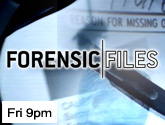|
The moonlight cast deep shadows over the ancient metal spiderwork
of the bridge. A light rain had begun to fall, generating a rank and
unwholesome smell from the rusted railroad tracks below.
Time seemed to have stopped in Kingsbury Run. The vast changes
the city had seen over the years had barely touched the ugly ravine
which cut a long jagged wound across the East Side. This was a sore
that would not heal, festering with the decay of industrial and
human debris. Mountains of sand and gravel, whose ownership and use
had long been obscured. Gaping corpses of machinery, stripped of all
dignity and purpose. Monuments to a technology discarded, now choked
by the overgrowth of stunted sumac and tall grass.
It was all but silent, as were the few homeless creatures
wandering the lonely paths of the Run. The living refuse that
lingered anonymously, obliterated its pain in pint bottles and
huddled under the pathetic shelter of the bridge .
The city had forgotten its frenzied fascination with this grim
wasteland. Long gone were the hundreds of hobos who fled the dark
presence that stalked them. And with them, the thousands of curious
spectators who watched for hours as the police dredged the oily,
stagnant pools. The reporters, who had fed off the story so
voraciously for years, whipping the city into panic, had buried
Kingsbury Run in their morgue files.
Now, six decades later, the story comes to life again through the
diaries of the murderer, a fictional character named Frank. Frank, a
man who rose from desperate poverty to a surgeon with great promise,
fell prey to his own demons and lost it all.
|




